Happy World Whale Day! We celebrate whales every February 18. Image via Nahuel Robledo/ Pexels.
Whales aren’t fish!
Because they have fins and flippers, you might think whales are big fish, but they’re actually mammals, just like us. And that means that they’re warm-blooded, they breathe air and that baby whales need their mothers’ milk to survive. And they even have hair! Before they’re born, a layer of fuzz covers whales. It’s called lanugo, and some even keep hair as adults. Sound familiar?
So, if they’re more akin to humans than fish, why do they live in the ocean? Around 50 million years ago, the ancestors of whales lived on the land. We know this by looking at whale skeletons. They don’t have legs, but they do have tiny hip bones left over from their prehistoric relatives. Evolution changed them, and these animals that used to hunt on land started hunting in water. Over time, they changed and adapted to an aquatic lifestyle.
These stunning creatures live in every ocean on the planet. You can find them in temperate oceans and tropical waters around the equator, as well as in the frigid Arctic and Antarctic oceans. Some whale species live in seas, including the North Sea and the Mediterranean.
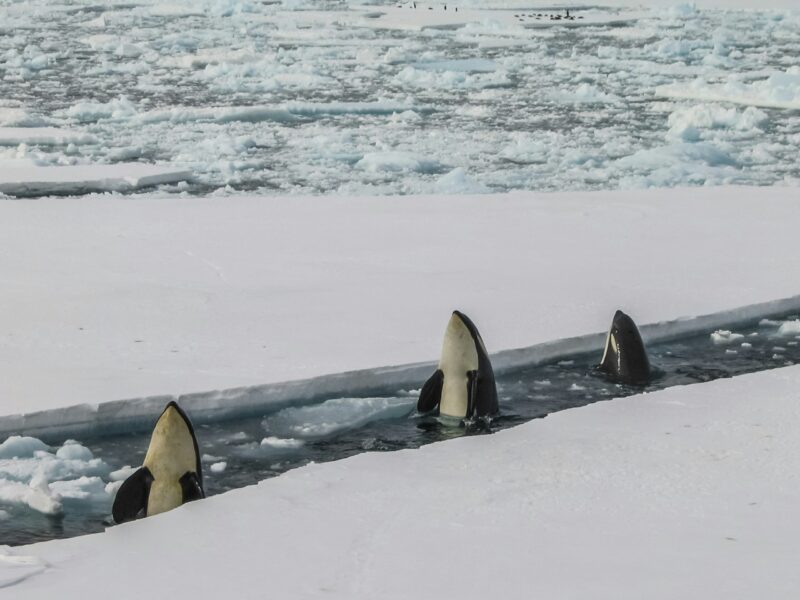
There are 2 types of whales
Over millions of years, the water – which gives more support to their humongous bodies than air does – has allowed them to grow into 92 different species of all shapes and sizes.
All whales are cetaceans, but there are two major types. One is the toothed whale (77 species) and the other one is the baleen whale (15 species). And, as you probably guessed, their differences can be found in their mouths. Some whales have teeth, while others have hairy structures called baleens.
Baleen whales
The giant brushes in baleen whales’ mouths act like a big sieve, filtering food out of the water. A favorite meal for baleen whales is one of the smallest animals in the ocean, a little crustacean called krill. These tiny creatures only grow to around 0.4 or 0.8 inches (1 or 2 centimeters) long. So obviously, whales need to eat a lot of them. In fact, they eat about 40 million krill a day! To give you an idea of how much that is, put five cows together, and you got it.
Some whales use bubble netting to feed. How clever! They cooperatively blow bubbles that encircle their prey. The prey won’t cross through the bubbles, trapping them, and making it easy for the whales to eat them.
When whales sense food ahead, they open their mouths, with some species stretching open to almost 90 degrees! And when they close their mouths, their giant tongues squeeze the water out through the baleen filters, leaving delicious food, such as plankton, inside.
Whales get iron from krill in the deep ocean. Then the krill waste (whale poop) floats to the surface and serves as a fertilizer for shallow ecosystems. This helps sequester 200,000 tons of carbon from the atmosphere every year by fertilizing photosynthetic plankton.
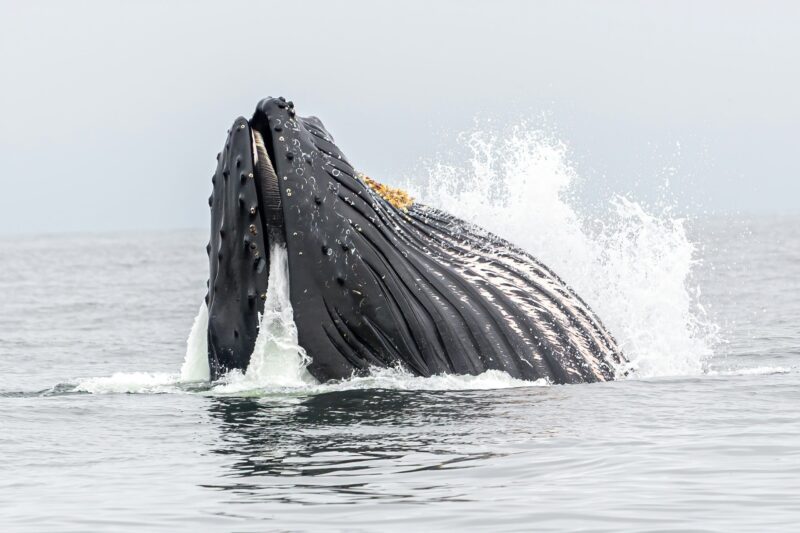
Toothed whales
The toothed whale family includes the sperm whale, the all-white beluga whale and the narwhal with its incredible unicorn-like tusk. Toothed whales also eat fish, squid and crustaceans, but some, like the orcas (killer whales), hunt other mammals such as seals. They have even learned to launch themselves onto beaches to catch seals in the shallows. They may be one of the biggest predators in the ocean. But don’t worry, they don’t attack humans.
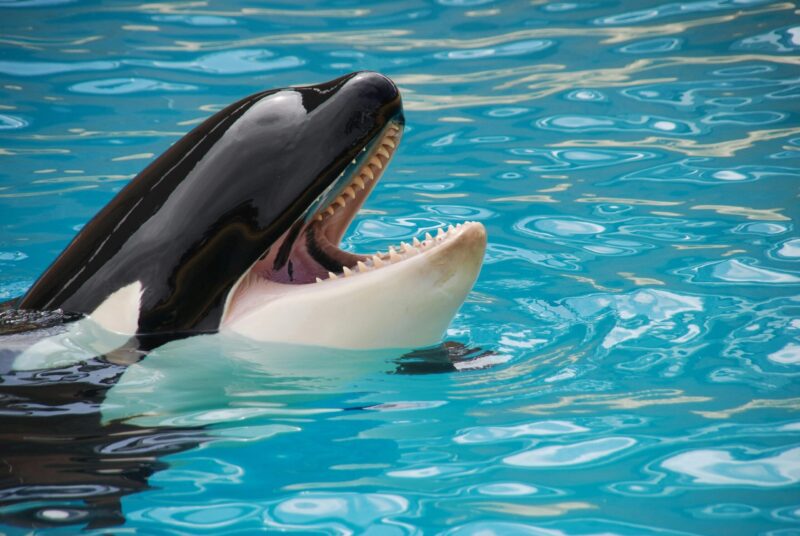
Whales breathe through their blowholes
Over the years, cetacean nostrils migrated back from snouts to the top of their heads. Baleen whales have two holes, while toothed whales have one. The purpose of having blowholes on top of their heads is for the convenience of not having to lift their entire head out of the water to take a breath. In fact, whales can’t breathe through their mouths.
Whales’ breathing is very efficient. And they have conscious control over their breathing and heart rate. They can regulate their oxygen levels, which is particularly important for deep-diving species. Once underwater, they can slow down their heart rate and shunt the oxygenated blood to needed areas, like their brain, heart and muscles. How long whales can hold their breath underwater depends on the species.
These gigantic animals expel air, not water, from their blowholes. When a whale goes back to the surface after an impressive breath hold, what you hear or see is them breathing out before they inhale and dive back underwater. As moist warm air from the whale’s lungs meets cold air outside, the moisture condenses into a cloud, like seeing your breath on a cold day. This cloud also includes mucus and droplets of seawater that were covering the blowhole when the whale exhaled. And you can even see whales producing rainbows.
The misconception that water comes out of a whale’s blowhole can be harmful. Dan Jarvis of the British Divers Marine Life Rescue describes instances of people finding a stranded whale and “pouring water directly into the blowhole thinking it’s a fish and it needs to be filled up with water.” Sadly, they have unintentionally killed the animal as a result.
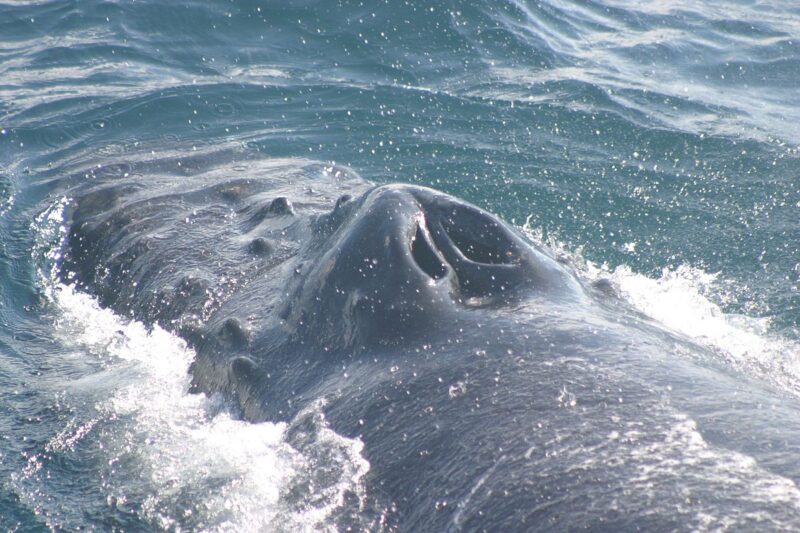
Other parts of their anatomy
Because whales descended from animals with limbs, their backbones don’t naturally bend side to side, but rather up and down. That’s why their tail fins are horizontal, instead of vertical like fish. Even though they no longer have hind limbs, their hips aren’t completely gone in some species.
Whales don’t have external ears, and their ear canals are no longer open to the outside, but ear wax still builds up inside! When a whale dies, scientists can use this ear wax to study its diet and its hormone levels every year the whale was alive, like we do with tree rings! A Q-tip, anybody?
And even when whales die, they serve a purpose. When their heavy carcasses fall to the deep ocean, they can form mini ecosystems called whale falls, which sustain countless deep-sea species for decades.
Breaking records
There are many more incredible facts about these creatures. They’re the biggest living animals on Earth. The blue whale holds that record, weighing up to 400,000 pounds (182,000 kg or approximately 33 elephants) and reaching up to 98 feet (30 m) in length. But they smash other records, too.
The Cuvier’s beaked whale can hold its breath for two hours, the longest for any mammal. It’s also been tracked 10,000 feet (3,000 meters) below the surface. Check out this animation that shows how deep the ocean really is.
A bowhead whale is also the longest-lived mammal; it lives in northern Canada and has a natural life span of 268 years! So, it can be even older than the founding of the United States.
The sperm whale has the largest brain in the animal kingdom; it’s six times the size of a human’s. They are thought to be one of the most intelligent animals on Earth.
Humpback whales in the Southern Hemisphere live off their fat reserves for 5 1/2 to 7 1/2 months each year, as they migrate from their tropical breeding grounds to the Antarctic.
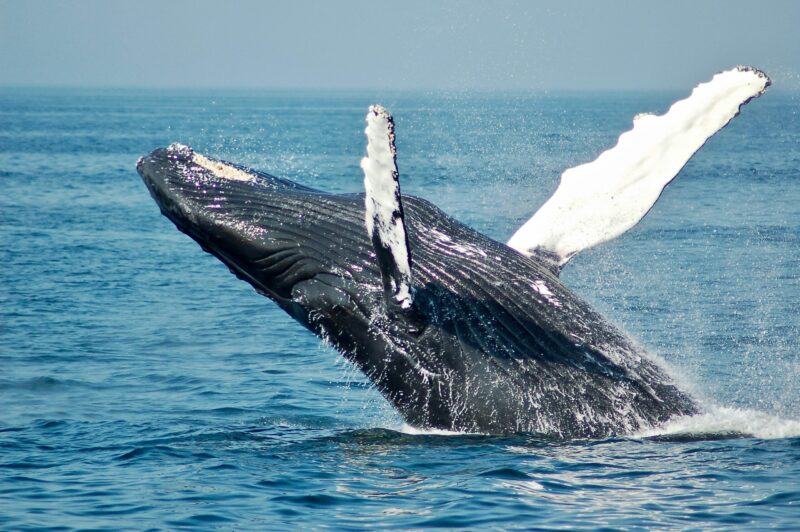
Whales and echolocation
Toothed whales like the sperm whales can communicate, navigate and hunt by using echolocation. These whales produce clicks in the nasal passages. Then they cross the melon (a spot in the forehead), and then the lower jaw picks up the returning echoes and delivers those vibrations back to the inner ear.
A beluga’s melon is generally more flexible compared to other whale species, and it can change in shape when the whale is producing sounds.
See an image of the process, here.
Did you know? Bats use echolocation, too.
Big brains, big voices
Baleen whales like humpbacks don’t use echolocation, but they are famous for their songs. And not any song; they’re very complex with short phrases combined into themes that can last for half an hour or more. They’re talented musicians.
Whale calls are the loudest of any creature on the planet and can be heard underwater for hundreds of miles/ kilometers.
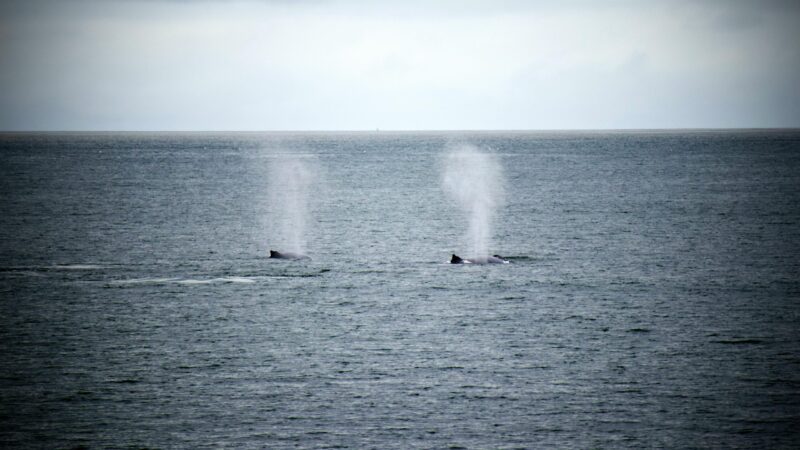
We still don’t know how whales produce their sounds, but scientists think they use a big sac under their vocal cords to squeeze air into the larynx. And they also have huge lungs to hold the air and keep singing for a long, long time.
The Whale-SETI team has been studying humpback whale communication systems in an effort to develop what SETI researchers call “intelligence filters” in the search for extraterrestrial intelligence.
Threatened
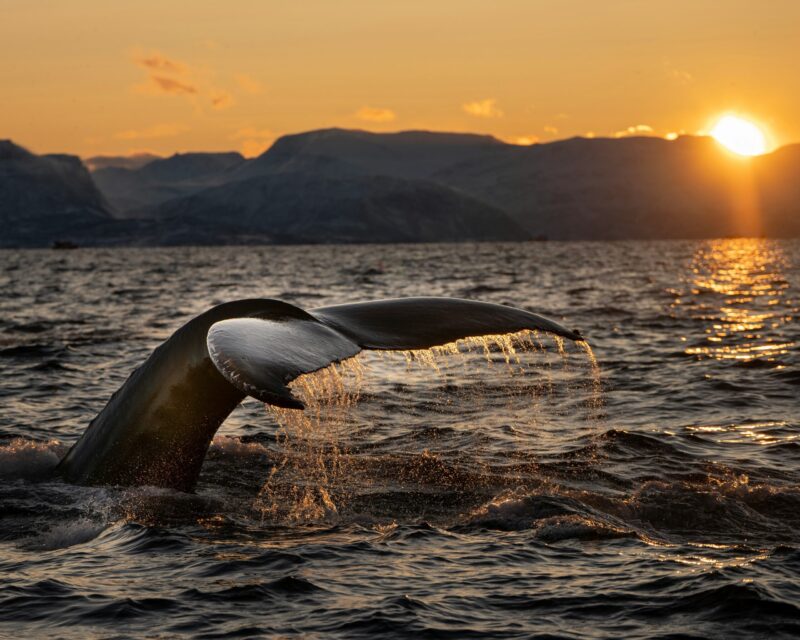
It’s estimated that there were over 225,000 Antarctic blue whales before their exploitation in the 1800s-1900s. Today, there are between 10,000 to 25,000 left in the world.
Despite all the amazing abilities whales have, for many years they’ve been heavily hunted by people, and some species remain close to extinction even today. But thanks to a global hunting ban in the 1960s, in the last few years the number of blue and humpback whales is finally starting to increase.
We hope to see these majestic creatures in the wild for many more years to come.
Bottom line: Whales are not just the biggest animals on the planet, they have smashed other records, too. And they way they communicate and eat … Wow!











